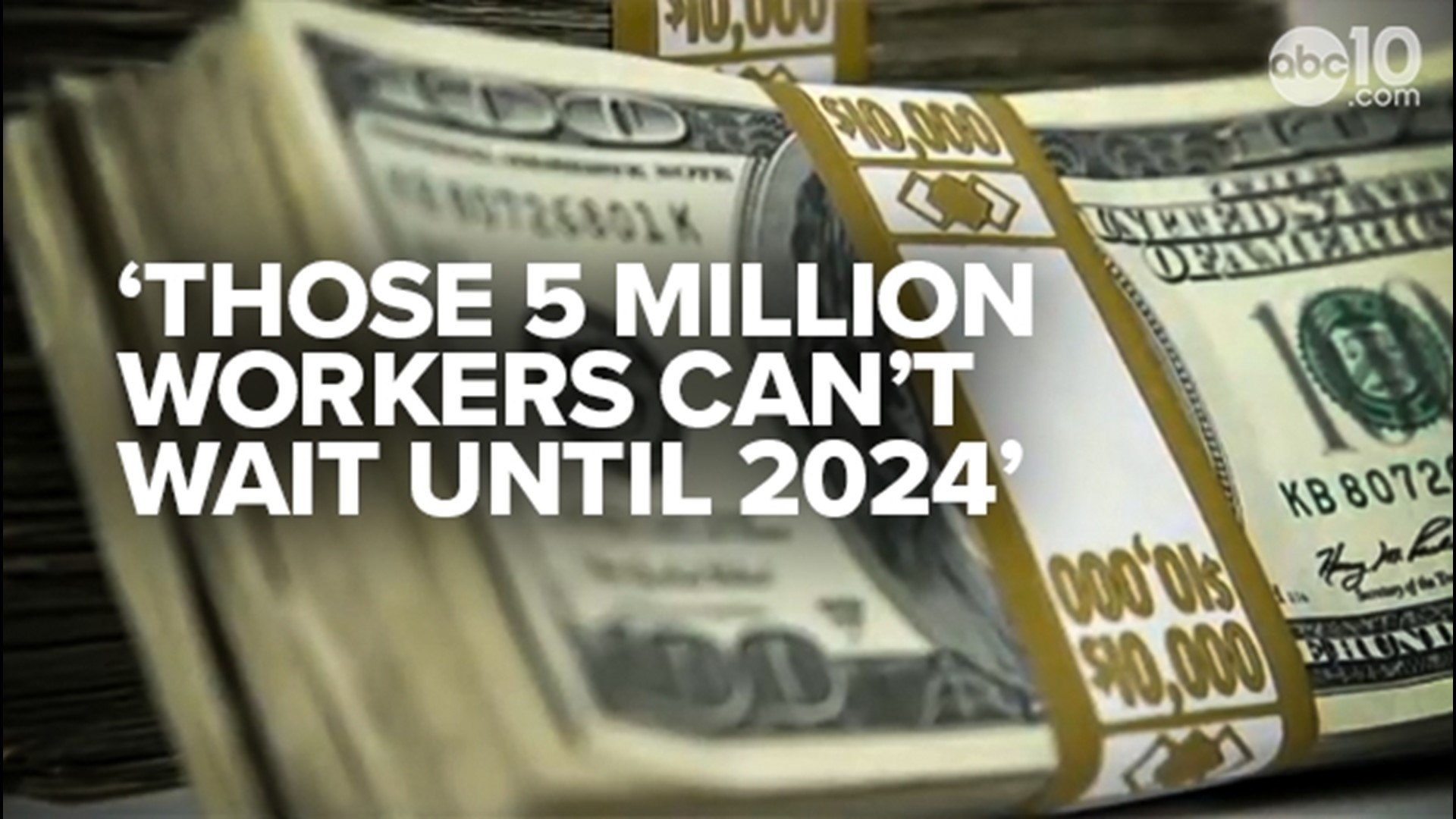CALIFORNIA, USA — A common trend in the current housing market in California is that many are having a hard time affording to buy a house in many regions across the state.
California's current home ownership rates sits at 54.6% in 2022, the second lowest in the nation just behind New York at 53.6%, according to the US Census Bureau. Between 2016 and 2020, nearly half of California counties had home ownership rates of less than 60% with the lowest being in more notably expensive counties like Los Angeles at 46% and San Francisco at 38%.
The California Association of Realtors recently released data from its quarterly housing affordability index showing a large gap between average home prices in each county and the estimated income needed to buy a home based on median cost.
Sacramento State Economics Professor David Lang explains these seemingly massive gaps are not black and white, and don't ultimately determine whether or not the area is otherwise affordable.
“Does it seem to take a lot of money to be a homeowner in many of the counties in California? For sure,” Lang said. "But is it actually getting in the way of people owning homes in California? On average, not necessarily.”
Lang points out there are a number of complex and ever-changing factors to consider when analyzing the housing affordability index.
“These things change quickly because the cost of housing – the cost of a mortgage, plus insurance, plus the fees, plus the interest rate – all that taken together changes greatly as interest rates change,” Lang said. “And interest rates are changing pretty rapidly these days.”
These factors, specifically interest rates, are difficult to integrate when considering median home values as interest rates remain ever-changing, especially amid current economic conditions.
“It’s a moving target,” Lang said “Interest rates change faster than the rest of the market changes.”
According to Zillow, the current average housing rate for home loans in California is around 5% for both a 30-year and 15-year fix since the most recent interest rate hike. This number is assuming the home buyer is equipped with the standard expectations for a good applicant, like a 740 credit score with 20% down.
But Lang points out the way median home values and median income are estimated doesn't necessarily account for the majority.
For example, El Dorado County has a considerably higher home ownership rate (75.5%) than the statewide average, yet the gap between the minimum affordability income and the average remains significant.
“[What] we have to understand is that there are exceedingly few people who are the medium,” Lang said. “There are exceedingly few people who are that average person, and that average household who's looking at the average housing value in an average neighborhood."
Median home values also vary great depending on the area. California is made up of dozens of diverse regions priced solely based on demand for the location. In locations with high demand, median home values will be much higher and housing affordability will be much lower as a result.
“Home ownership is not only a function of affordability, there's also preferences and lifestyle and everything else that goes along with it,” Lang said.
Despite this consideration, many still can't afford to buy a home in area they live in with current rates of wage distribution.
“We should see wages, salaries and compensation start to move upward in the coming months as we kind of reach our new equilibrium,” Lang said. “But it's not going to be tomorrow, it just takes too long to do that.”
Another significant factor to consider is what regions' data are most heavily affected by racial inequities.
According to the California Housing Finance agency, Black and Latino households are among the lowest rates of home ownership across the state. This disparity is largely in part due the slowly decreasing but ever-present racial wealth gap seen across the U.S.
“Unfortunately, some of the very counties that look like they have the biggest gaps are counties that also tend to have the biggest income inequality," Lang said.
Black and Latino families make up 11% of family incomes above the top 90% of earners despite comprising 43% of all families in the state, according to the Public Policy Institute of California.
Recognizing these discrepancies as well as a number of microeconomic factors can help give both current and potential homeowners an idea of what to consider when looking at average home values.
Lang said there are some strong indications home prices will fall altogether, but interest rates will continue to rise as the Fed continues efforts to avoid economic recession.
“Interest rates are very likely going to go up, which is going to make overall housing costs a little more expensive,” Lang said. “But every indication that's out there is suggesting that base prices for homes should come down or at least stabilize and stop going up explosively like they have been for the last few years.”
Watch more from ABC10: Sacramento breaks ground on 100-unit 'Safe Stay Community' sleeping cabins



















